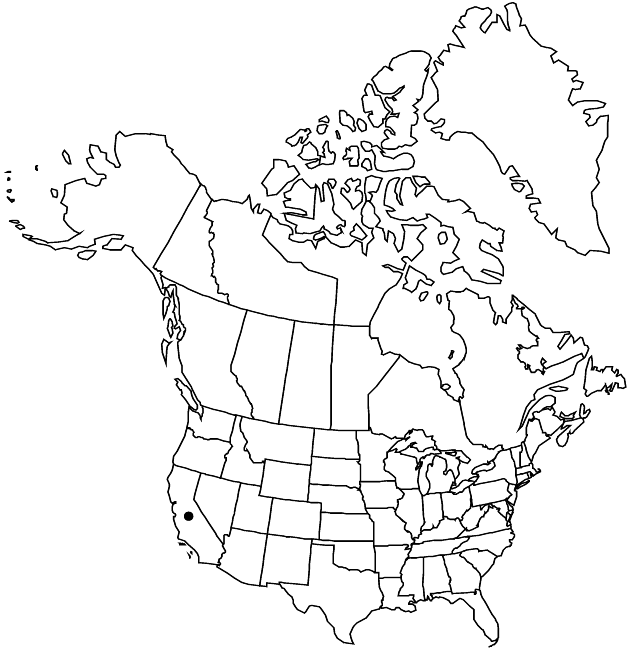Chaenactis glabriuscula var. megacephala
in War Department [U.S.], Pacif. Railr. Rep. 4(5): 104. 1857.
Plants 15–40 cm; proximal indument grayish, arachnoid, early glabrescent. Stems mostly 1–5, ascending to erect; branches mainly proximal. Leaves basal (withering) and cauline, 1–8 cm; largest blades ± plane, scarcely succulent, usually 1-pinnately lobed; lobes 2–7 pairs, ± remote, ± plane or terete. Heads mostly 1–3 per stem. Peduncles 5–20 cm. Involucres ± hemispheric to broadly cylindric. Phyllaries: longest 7–9 × 2–3 mm; outer glabrescent in fruit. Florets: inner corollas 5–8 mm. Cypselae 5–8.5 mm; pappi of 4(–5) scales in 1 series, longest scales mostly 5–8 mm, lengths ± 0.9(–1) times corollas.
Phenology: Flowering Mar–Jun.
Habitat: Dry, often sandy slopes, openings in chaparral, woodlands
Elevation: 300–1500 m
Discussion
Variety megacephala is known mainly from the southern Sierra Nevada foothills and adjacent San Joaquin Valley and Transverse Ranges; it intergrades extensively with vars. lanosa and glabriuscula. A specimen cited by P. Stockwell (1940) from Bingen, Klickitat County, Washington (Suksdorf, May 1907) was not checked; it is either misidentified or from an introduction that did not persist.
Selected References
None.
